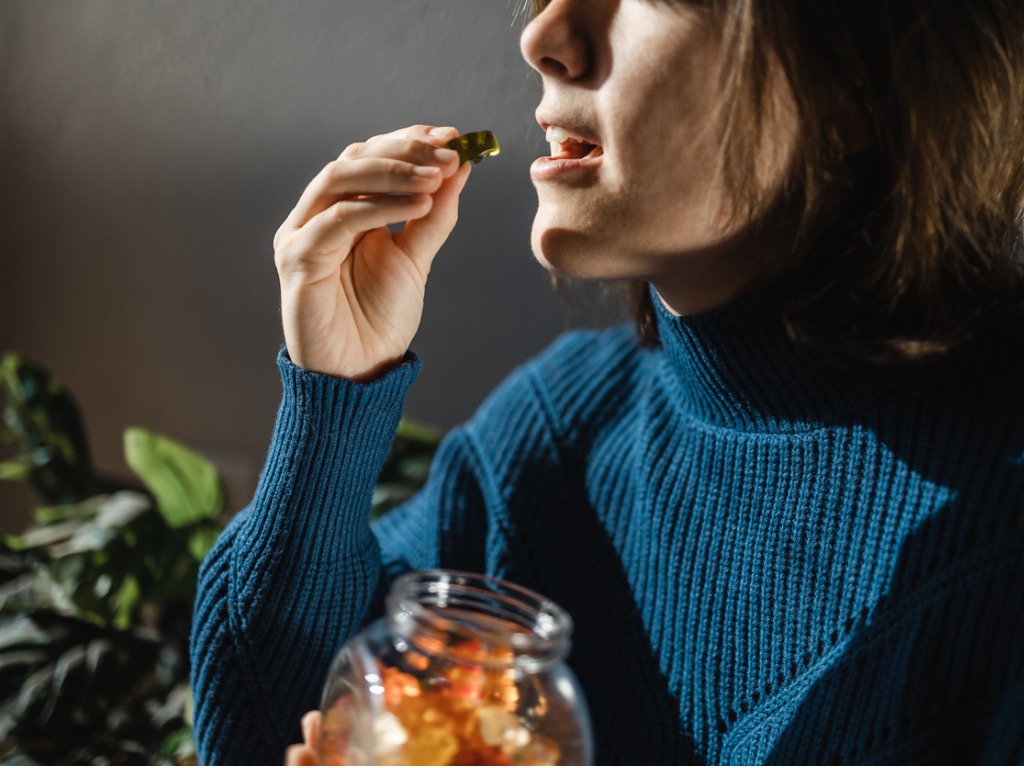What are nicotine gummies?

The Bottom Line
Nicotine gummies are marketed to help adults quit smoking; however, a single gummy contains enough nicotine to poison a young child.

What are nicotine gummies?
Nicotine gummies contain nicotine in the form of a gummy candy. They are marketed to adults to help them quit smoking, but they look similar to gummy candy, which can result in children accidentally tasting or swallowing them. In addition, sometimes teenagers can misuse nicotine products, including these gummies.
How does nicotine help someone stop smoking?
The primary addictive component of tobacco is nicotine. Nicotine replacement therapy is a medical treatment used to help people quit smoking. Nicotine replacement therapy works by replacing cigarettes with another source of nicotine, such as a gum, inhaler, or in this case, gummy candy. Although people who use nicotine replacement therapy are still getting nicotine, it is not obtained through the act of smoking, and this may decrease cravings and prevent nicotine withdrawal symptoms. Since cigarette smoke and other chemicals in tobacco products can cause cancer, nicotine replacement therapy may be a safer alternative to smoking cigarettes.
Are nicotine gummies legal?
As of October 2022, nicotine gummies have not been approved by the U.S. Food and Drug Administration (FDA) as a form of nicotine replacement therapy or a way to stop smoking. In August 2022, the FDA issued a warning letter to one manufacturer of nicotine gummies because the company did not submit the proper application for the product to the FDA. This means the manufacturer cannot legally make, sell, or distribute the gummies in the United States.
How much nicotine is in each gummy?
According to the FDA, one brand of gummy candy contains 1 mg of nicotine per gummy, and each container holds 12 gummies. If a child gains access to one container, he or she could consume a dangerously high amount of nicotine at one time. Nicotine gummies are particularly dangerous for children because they look like candy and feature appealing flavors and colorful packaging. Previous reports have demonstrated children are susceptible to poisoning by other types of gummies, such as those that contain cannabis.
How much nicotine is poisonous to a child?
Depending on the child’s weight, 1-4 mg of nicotine can cause toxicity. Smaller children, as well as children who consume larger amounts of nicotine, are likely to experience more significant toxic effects.
What are the symptoms of nicotine poisoning?
Symptoms of nicotine poisoning depend on the amount ingested. Usually the symptoms occur within an hour of consumption because nicotine is well absorbed from the gastrointestinal system. The most common signs and symptoms are nausea, vomiting, and abdominal pain. Nicotine can cause an increase in an individual’s heart rate and blood pressure. Seizures, coma, and death have been reported in severe cases of nicotine poisoning.
Is there a treatment for nicotine poisoning?
There is no specific antidote for nicotine poisoning. Treatment includes supportive care such as intravenous fluids and medications for nausea. In severe cases, insertion of a breathing tube and administration of medications to treat seizures may be required.
What do I do if my child ate a nicotine gummy?
If a child has consumed a nicotine gummy or if someone is experiencing worrisome signs or symptoms after eating a nicotine gummy, get guidance from Poison Control immediately. Help from Poison Control is available online at poison.org and by phone at 1-800-222-1222. Both options are free, confidential, and available 24 hours a day.
Maryann Amirshahi, PharmD, MD, MPH, PhD
Medical Toxicologist
Poisoned?
Call 1-800-222-1222 or
Prevention Tips
- When using nicotine replacement therapy, choose a formulation that does not look like candy.
- Keep all nicotine containing products away from children.
- Talk to your teenagers about the dangers of nicotine products.
- Do not purchase nicotine gummies.
This Really Happened
A 2-year-old girl was found with a nicotine vape cartridge. It was unclear how much of the fluid she got in her mouth. Her parents took her to the emergency department, where she had some confusion and several episodes of vomiting. She was discharged after 6 hours of observation.For More Information
American College of Medical Toxicology: Nicotine FAQs.
U.S. Food and Drug Administration. VPR brands warning letter.
References
Poisoned?
Call 1-800-222-1222 or
Prevention Tips
- When using nicotine replacement therapy, choose a formulation that does not look like candy.
- Keep all nicotine containing products away from children.
- Talk to your teenagers about the dangers of nicotine products.
- Do not purchase nicotine gummies.
